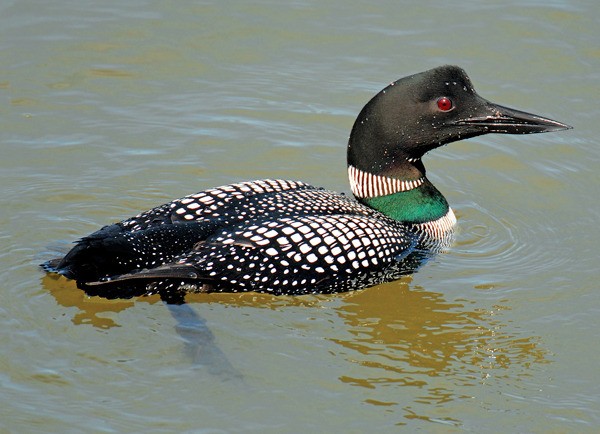I recently caught my first salmon of the year. It was a beautiful 6-7 pound silver, which I landed from the beach on the west side of the island. A few years ago my birding buddy, Ann Casey, introduced my sister and me to casting from shore and since then we’ve enjoyed fishing together and reflecting on our childhood summers when we were beach rats at Clinton Beach. Back then we trolled in our dad’s boat with dodgers and herring or an assemblage of spinners called “popcorn.” Now we cast off the beach with a princess pink Buzz Bomb or a lime green rotator.
Late August and September fishing nicely fills the gap during the quiet time of the year for birding. With breeding season over, bird activity has fallen off and most of our migrating and wintering bird species are still up north. Still I keep an eye out for favorite resident birds and early migrants. Birding is never quite so dead as salmon fishing sometimes is.
One telltale sign of good fishing is the arrival of the Caspian terns, which wheel overhead searching for juvenile salmonid species. These large, stocky terns are generally pale gray with black wing tips and a black, slightly crested cap. Their large, coral-red beak has earned them the nickname of “carrot bill.”
Usually in pairs, these terns announce their presence with loud grating “karrk” calls. Using long pointed wings they fly back and forth, head and eyes pointing downward, until spotting a prey prompts them to hover and then plunge-dive into the water, often completely submerging.
One day this week I arrived early to the beach on a particularly soft, quiet, clear morning. I settled into an open section with maybe a dozen other fishers. Far to the west groups of black birds were beelining it south only a few feet above the water, too far off shore to identify. The flock settled to rest and I heard my favorite birdcall wafting over the still bay. First a long, haunting wail, then a series of tremolos, shifting into a yodel.
These were likely some of the first common loons to migrate through. Many others will stop in Puget Sound to spend the winter. The loons breed north and east of us, so we miss most of the pair bonding, which includes several distinct types of calls. During spring and fall lucky birders and fishers can hear these vocalizations on our waters.
Most of the birds stay well offshore feeding in deeper water, but occasionally a pigeon guillemot will float along with the tide only 100 feet out. They dive to the bottom for sculpin and gunnels, seemingly uninterested in our lures, which fly through the air around them.
For me, fishing is all about long periods of quiet, contemplative enjoyment of our glorious natural world, occasionally interrupted by the intense action of reeling in a fish. Looking out over Admiralty Inlet one could think that we are treating our environment rather well. We’ve made great strides with the clean air and clean water acts and by regulating fishing runs.
Yet, hearing those loons reminded me of the State of the Birds report recently published by the National Audubon Society. Both the Caspian tern and the common loon are included on the Washington State species of concern list. A decrease in their populations has prompted their addition to this list.
Maybe you’ve seen news headlines from that report. Of the 588 bird species they studied, 126 are at risk of severe declines over the next 35 years. The two major causes are habitat loss and climate change.
It makes me wonder what other birds that I’ve enjoyed seeing this summer right here on Whidbey might not be here in five, 10 or 20 years. The western grebe, horned lark, marbled murrelet, northern goshawk, American bittern, Brant’s cormorant even the olive-sided flycatcher are all included in the Washington State List of Species of Special Concern.
Spending time each day out birding, with a few fishing trips tossed in, reminds me again and again that nature is more than just a home for animals and fish — it’s a sacred part of my life. It more than warrants our respect and protection.
Frances Wood can be reached at wood@whidbey.com. Photographer Craig Johnson is at Craigjohnson@whidbey.com.


